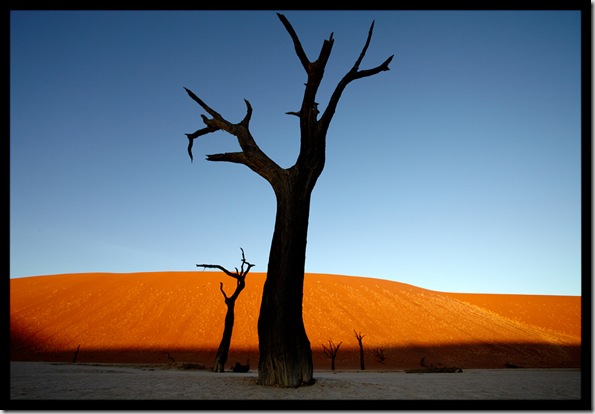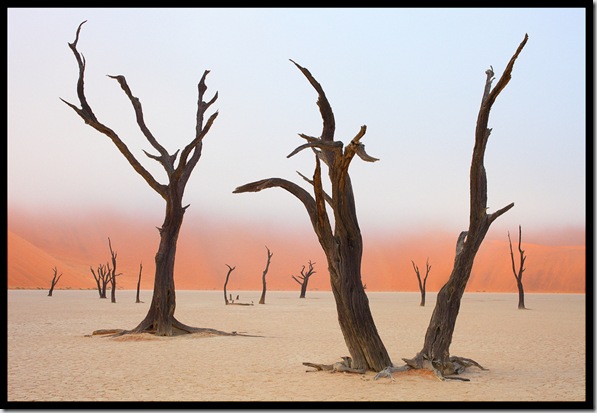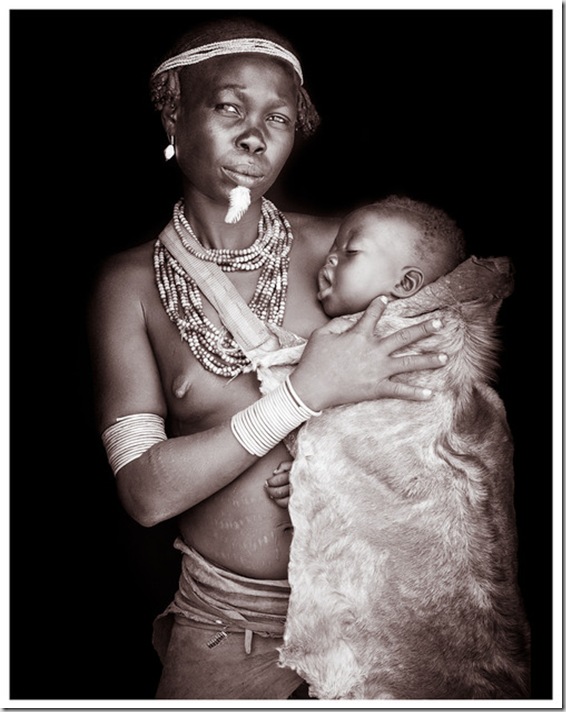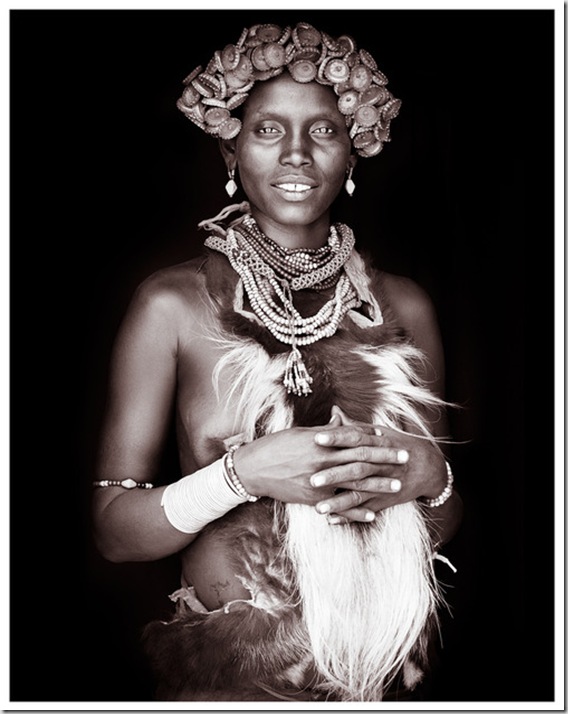



The solution, I imagined, would involve abstracting the remarkable from the not so remarkable: put simply, I felt that the vibrant and intense individuals that I had met in traditional communities would best show their magnetism on camera when they were removed from the (often) dull and dusty backgrounds of their immediate environment. After a few days I started to imagine each of these people in front of me emerging from the nothingness of darkness, with no distractions, hoping that this would provide a real feeling of proximity between the viewer and the person in the picture. I made a conscious decision at that time to leave a more documentary style of environmental portraiture to others. Practicing this new technique in remote African villages in 2006 I had nothing but sunshine and a hut available as a great ‘open studio': so I used these parameters and started experimenting (I've never really liked flash anyway). So it's simply the illumination of natural sunlight, and sun on dry earth, that reaches into the darkness of huts and lights up these remarkable people. Sun and dry earth are the only ingredients required for the lighting in my prints. And of course, you also need to find exceptional people!




Falling in love with photography, and the origins of this series:
I first fell in love with photography around 2003. I had not been fortunate enough to receive an art or photography education, but I knew back then, when I picked up my first SLR camera, that I had found the perfect way to express myself. Every time I had the camera in my hand I was looking to improve, needing to know what everything and anything looked like once it had been through the photographic process. It was a bit like a mad pursuit of alchemy - throwing everything into the mix to see if any magic came out of the other side. The process of photographic learning is very rarely a simple one, but to me it remains beautiful: discoveries, experimentation and seeing for the first time how a camera distorts and enhances the world.
In Africa I seem to have made it my goal to travel through some of the remotest areas of the continent where the reaches of urbanisation and 21st century living are barely detectable. Looking back, this wasn’t my intention when I first arrived there in 2006, but somehow I keep returning to Africa to photograph because I'm fascinated to encounter societies that are able to survive in some of the most arid, isolated and difficult environments that people have settled in.
If you haven’t visited these places then the reality of living is not nearly as romantic or idealised as one might imagine. Life takes place against a backdrop of very uncertain resources and enormous hardships, but traditions and hospitality towards outsiders remain intact.
I specifically chose to photograph the individuals that you see in these galleries because I had a very real sense of wonder when I met them. Each one of these people had something that attracted me, sometimes a piercing intensity, or an uncommon beauty, that I felt compelled to try and capture. It’s true that I photograph for myself, first and foremost, but a close second is my desire to show others this magnetism that draws one into the eyes of these fascinating people.
I have usually travelled alone or with a guide on these journeys, along the way walking and hopping onto overloaded vehicles of every kind to head to remote settlements. Often the destination is a transient, weekly market where hundreds of vibrant, colourful people assemble somewhat incongruously against a dull, dusty backdrop for a few hours. Later in the day they will all melt away with their animals and traded possessions, until the location is again a patch of bone-dry ground with almost nothing to separate it from the rest of the featureless land that typifies much of the African Sahel. It is fascinating to observe this process play out in almost exactly the same way across countless African countries, many of which are separated by hundreds or thousands of miles across this huge continent’s surface.




My favourite tools are sharp prime lenses and cameras that let you capture the tiniest pieces of detail: whilst these details may be insignificant alone, when aggregated I feel they help paint the picture of the environment and how each person adapts to theirs.
My favourite series of work remains the Northern Kenya series which involved 6 weeks of intense travelling with my guide, Mo, across remote areas without a vehicle and often without any semblance of an idea how to get to the next tiny settlement. The trip was full of unique encounters in locations that seemed to be famous, to me at least, as places where no transport seemed to be heading. On one particular occasion we came across a lone Moran (warrior) emerge into the dawn light, miles from anywhere. He seemed like a mirage: a vibrant vision in pink cloth and bright colourful jewellery, and more acutely so when set against the hazy yellow monotone of land that he emerged from. Even for Northern Kenya, I thought he seemed to be in a remote, featureless location: devoid of any water, and within an hour it would again be blistering hot. Despite these uncomfortable realities - which clearly weighed more heavily on my mind than his - the warrior seemed confident of his bearings and stopped for a moment to exchange pleasantries with Mo and I. A couple of minutes later, after sharing cigarette with my guide, he purposefully set off walking again, to God knows where. This place that looked barren and foreboding, to me at least, was clearly his home.




Angola and Ethiopia 2012
Portraits / August 2012
The far south of Angola: crazy bureaucracy but the reward of encounters with wonderful traditional cultures that are really infrequently visited by outsiders. Beautiful interactions with the Mumuhuila and Muhacaona: some of which you see here.On my way home I detoured with three weeks in the Omo Valley to visit old friends and, for the first time, photograph the Arbore and Dassanech. Wonderful memories again.
All images © John Kenny
Website





Nessun commento:
Posta un commento